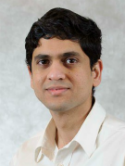A novel kernel Wasserstein distance on Gaussian measures: An application of identifying dental artifacts in head and neck computed tomography Journal Article
| Authors: | Oh, J. H.; Pouryahya, M.; Iyer, A.; Apte, A. P.; Deasy, J. O.; Tannenbaum, A. |
| Article Title: | A novel kernel Wasserstein distance on Gaussian measures: An application of identifying dental artifacts in head and neck computed tomography |
| Abstract: | The Wasserstein distance is a powerful metric based on the theory of optimal mass transport. It gives a natural measure of the distance between two distributions with a wide range of applications. In contrast to a number of the common divergences on distributions such as Kullback–Leibler or Jensen–Shannon, it is (weakly) continuous, and thus ideal for analyzing corrupted and noisy data. Until recently, however, no kernel methods for dealing with nonlinear data have been proposed via the Wasserstein distance. In this work, we develop a novel method to compute the L2-Wasserstein distance in reproducing kernel Hilbert spaces (RKHS) called kernel L2-Wasserstein distance, which is implemented using the kernel trick. The latter is a general method in machine learning employed to handle data in a nonlinear manner. We evaluate the proposed approach in identifying computed tomography (CT) slices with dental artifacts in head and neck cancer, performing unsupervised hierarchical clustering on the resulting Wasserstein distance matrix that is computed on imaging texture features extracted from each CT slice. We further compare the performance of kernel Wasserstein distance with alternatives including kernel Kullback–Leibler divergence we previously developed. Our experiments show that the kernel approach outperforms classical non-kernel approaches in identifying CT slices with artifacts. © 2020 Elsevier Ltd |
| Keywords: | comparative study; computer assisted tomography; retrospective study; head and neck cancer; computerized tomography; texture features; head-and-neck cancer; kernel method; textures; feature extraction; machine learning; learning systems; human; priority journal; article; learning algorithms; hierarchical clustering; radiomics; vector spaces; wasserstein distance; optimal mass transport; image artifact; kernel kullback–leibler divergence; kernel trick; kernel wasserstein distance; reproducing kernel hilbert space; hilbert spaces; gaussian measures; kernel approaches; reproducing kernel hilbert spaces; dental radiology; kullback leibler divergence |
| Journal Title: | Computers in Biology and Medicine |
| Volume: | 120 |
| ISSN: | 0010-4825 |
| Publisher: | Pergamon-Elsevier Science Ltd |
| Date Published: | 2020-05-01 |
| Start Page: | 103731 |
| Language: | English |
| DOI: | 10.1016/j.compbiomed.2020.103731 |
| PUBMED: | 32217284 |
| PROVIDER: | scopus |
| PMCID: | PMC7237301 |
| DOI/URL: | |
| Notes: | Article -- Source: Scopus |
Altmetric
Citation Impact
BMJ Impact Analytics
Related MSK Work








